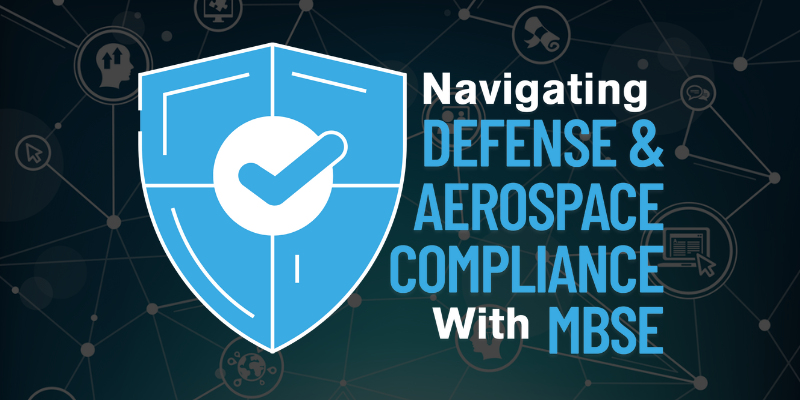Enhancing Systems Engineering Through Generative AI Webinar
Watch the recording of Dr. Steven Dam's INCOSE webinar, "Enhancing Systems Engineering Through Generative AI." In the ever-evolving field of...
1 min read
SPEC Innovations Team
:
6/23/23 11:36 AM

In today's fast-paced world of systems engineering, adopting effective methodologies is key to success. Model-Based Systems Engineering (MBSE) has become a game-changer, helping organizations streamline development, improve communication, and build more reliable systems.
For those new to this approach, getting started with MBSE can seem overwhelming. A recent webinar, Getting Started with Model-Based Systems Engineering, explored how organizations can begin their MBSE journey based on their project’s lifecycle stage. Here, we break down three practical starting points for MBSE for beginners.
If your organization has a well-defined requirements document, the top-down approach is an excellent way to implement MBSE. This method starts at a high level, gradually refining system models with specific details.
Benefits of the top-down approach:
✅ Ensures strong alignment between system design and requirements
✅ Improves traceability by linking design decisions to initial requirements
✅ Reduces the risk of missing critical system functions
By leveraging existing requirements, teams can create structured system architectures that meet all necessary criteria.
If you're working with an existing system—whether documenting or replacing it—the bottom-up approach is a great fit. This method focuses on analyzing system components, capturing behaviors, and modeling interactions.
Advantages of the bottom-up approach:
✅ Provides a deep understanding of system functionality
✅ Identifies areas for improvement
✅ Helps transition from legacy systems efficiently
Breaking down a system into its core elements allows engineers to enhance its performance and reliability.
When a project is in its early stages and has limited details beyond high-level policies, the middle-out approach offers a flexible starting point. This method balances top-down and bottom-up perspectives, enabling iterative development as more information becomes available.
Why choose the middle-out approach?
✅ Supports gradual system architecture refinement
✅ Adapts well to evolving project requirements
✅ Balances broad objectives with specific system components
This hybrid strategy allows engineers to shape a system’s architecture while remaining adaptable to new insights.
Getting started with MBSE requires selecting an approach that aligns with your project's lifecycle stage and available data. Whether you choose top-down, bottom-up, or middle-out, each method provides a structured way to integrate MBSE into your systems engineering process.
By understanding these strategies, MBSE for beginners becomes more accessible, paving the way for improved efficiency, better communication, and successful project outcomes.
↘️Watch the Webinar↙️
Have questions about model-based systems engineering or requirements management? Talk to an expert and see how Innoslate can streamline your projects from start to finish.

Watch the recording of Dr. Steven Dam's INCOSE webinar, "Enhancing Systems Engineering Through Generative AI." In the ever-evolving field of...
.png)
Don't feel like reading? Watch the recording instead!

Not up for the read? Watch the recording of the webinar!